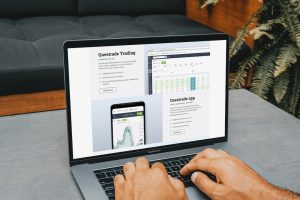Forex trading is an exciting and potentially profitable venture that can be undertaken by anyone with a computer and an internet connection. However, one of the most common questions asked by new traders is how many units they should trade in the forex market. In this article, we will explore this question in-depth and provide some guidance on how to determine the appropriate trading size for your individual circumstances.
Firstly, it’s important to understand what we mean by ‘units’ in the forex market. A unit is simply a standardised measure of the size of a trade. In forex trading, this is typically referred to as a ‘lot. A standard lot in forex trading is 100,000 units of the base currency. So, if you were trading the EUR/USD currency pair, a standard lot would represent 100,000 euros. There are also other lot sizes available, such as mini lots (10,000 units) and micro lots (1,000 units).
The size of your forex trades will depend on a number of factors, including your account balance, risk tolerance, and trading strategy. Let’s take a closer look at each of these factors.
Account Balance
Your account balance is one of the most important factors to consider when determining your trading size. As a general rule, you should not risk more than 1-2% of your account balance on any single trade. This means that if you have a $10,000 account balance, you should not risk more than $100-$200 on any one trade.
Risk Tolerance
Your risk tolerance is a measure of how much risk you are willing to take on in your trading. This will vary from person to person, and will depend on a number of factors such as your financial situation, investment goals, and personal preferences. Some traders are comfortable taking on higher levels of risk in pursuit of greater profits, while others prefer to take a more conservative approach.
Trading Strategy
Your trading strategy will also play a role in determining your trading size. If you are a long-term trader who holds positions for days or weeks at a time, you may be comfortable with larger position sizes. On the other hand, if you are a day trader who takes multiple positions each day, you may need to use smaller position sizes to manage your risk.
So, how do you determine the appropriate trading size for your individual circumstances? One way to do this is to use a position sizing calculator. These calculators take into account your account balance, risk tolerance, and trading strategy, and provide you with a recommended position size based on these factors.
Another approach is to use a fixed dollar amount per trade. For example, you may decide to risk $100 on each trade, regardless of your account balance or the size of the position. This approach can be effective for traders who want to keep their risk consistent across all trades.
In conclusion, determining the appropriate trading size in forex trading is a complex process that requires careful consideration of a number of factors. By taking into account your account balance, risk tolerance, and trading strategy, you can determine the appropriate position size for your individual circumstances. Remember to always use proper risk management techniques, such as stop-loss orders and position sizing, to protect your capital and maximise your potential profits.






